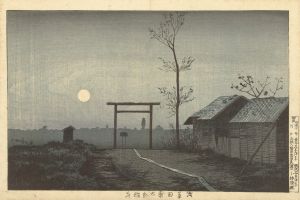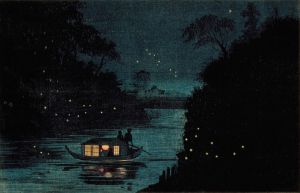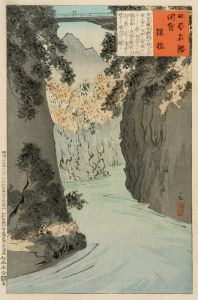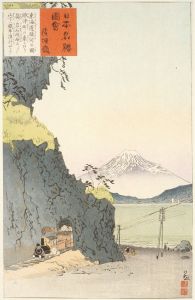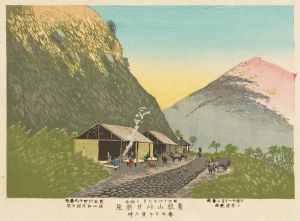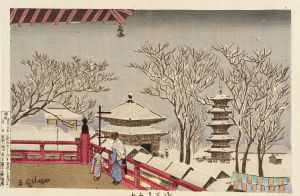
View of Rainfall on Shin-Ou-hashi in To-kei
A hand-painted replica of Kobayashi Kiyochika’s masterpiece View of Rainfall on Shin-Ou-hashi in To-kei, meticulously crafted by professional artists to capture the true essence of the original. Each piece is created with museum-quality canvas and rare mineral pigments, carefully painted by experienced artists with delicate brushstrokes and rich, layered colors to perfectly recreate the texture of the original artwork. Unlike machine-printed reproductions, this hand-painted version brings the painting to life, infused with the artist’s emotions and skill in every stroke. Whether for personal collection or home decoration, it instantly elevates the artistic atmosphere of any space.
"View of Rainfall on Shin-Ou-hashi in To-kei" is a woodblock print created by the Japanese artist Kobayashi Kiyochika. Kiyochika, born in 1847 and active during the Meiji period, is renowned for his innovative approach to ukiyo-e, a genre of Japanese art that flourished from the 17th to the 19th centuries. His works often reflect the rapid modernization and Western influence that Japan experienced during this era.
This particular print, "View of Rainfall on Shin-Ou-hashi in To-kei," is part of Kiyochika's series that captures the atmospheric effects of light and weather, a departure from the more traditional ukiyo-e style. The print depicts a scene of rainfall over the Shin-Ohashi bridge in Tokyo (historically referred to as "To-kei"), showcasing Kiyochika's skillful use of shading and perspective to create a sense of depth and movement.
Kiyochika's work is characterized by his use of chiaroscuro, a technique that employs strong contrasts between light and dark to achieve a sense of volume and three-dimensionality. This technique is evident in "View of Rainfall on Shin-Ou-hashi in To-kei," where the interplay of light and shadow enhances the mood of the rainy scene. The print captures the essence of a rainy day, with figures huddled under umbrellas and the bridge partially obscured by the downpour.
The Shin-Ohashi bridge, a significant landmark in Tokyo, serves as the focal point of the composition. The bridge was an important infrastructure project during the Meiji period, symbolizing the modernization efforts of the time. Kiyochika's depiction of the bridge in the rain not only highlights the architectural features of the structure but also reflects the everyday life of the people who used it.
Kiyochika's work is often compared to that of Western artists, particularly those of the Impressionist movement, due to his focus on light and atmospheric effects. However, his prints maintain a distinctly Japanese aesthetic, blending traditional techniques with contemporary themes. "View of Rainfall on Shin-Ou-hashi in To-kei" exemplifies this blend, showcasing Kiyochika's ability to capture the transient beauty of nature within an urban setting.
The print is part of a larger body of work by Kiyochika that documents the transformation of Tokyo during the Meiji period. His series of prints, often referred to as "Kiyochika's Tokyo," provides a visual record of the city's evolution, from its traditional roots to its emergence as a modern metropolis. Through his art, Kiyochika offers a unique perspective on the cultural and social changes of his time.
In summary, "View of Rainfall on Shin-Ou-hashi in To-kei" by Kobayashi Kiyochika is a masterful woodblock print that captures the essence of a rainy day in Meiji-era Tokyo. Through his innovative use of light and shadow, Kiyochika creates a dynamic and atmospheric scene that reflects both the natural beauty and the urban development of the period. His work remains an important part of Japanese art history, offering insights into the country's journey through modernization.







